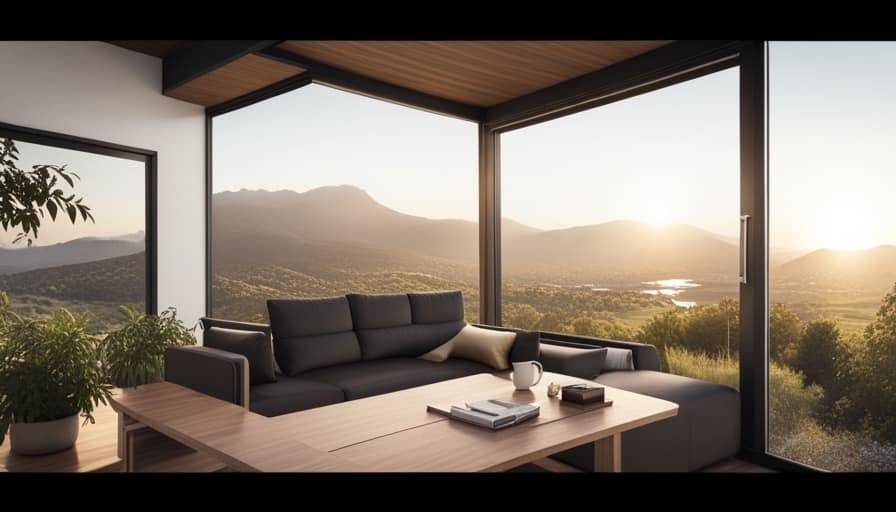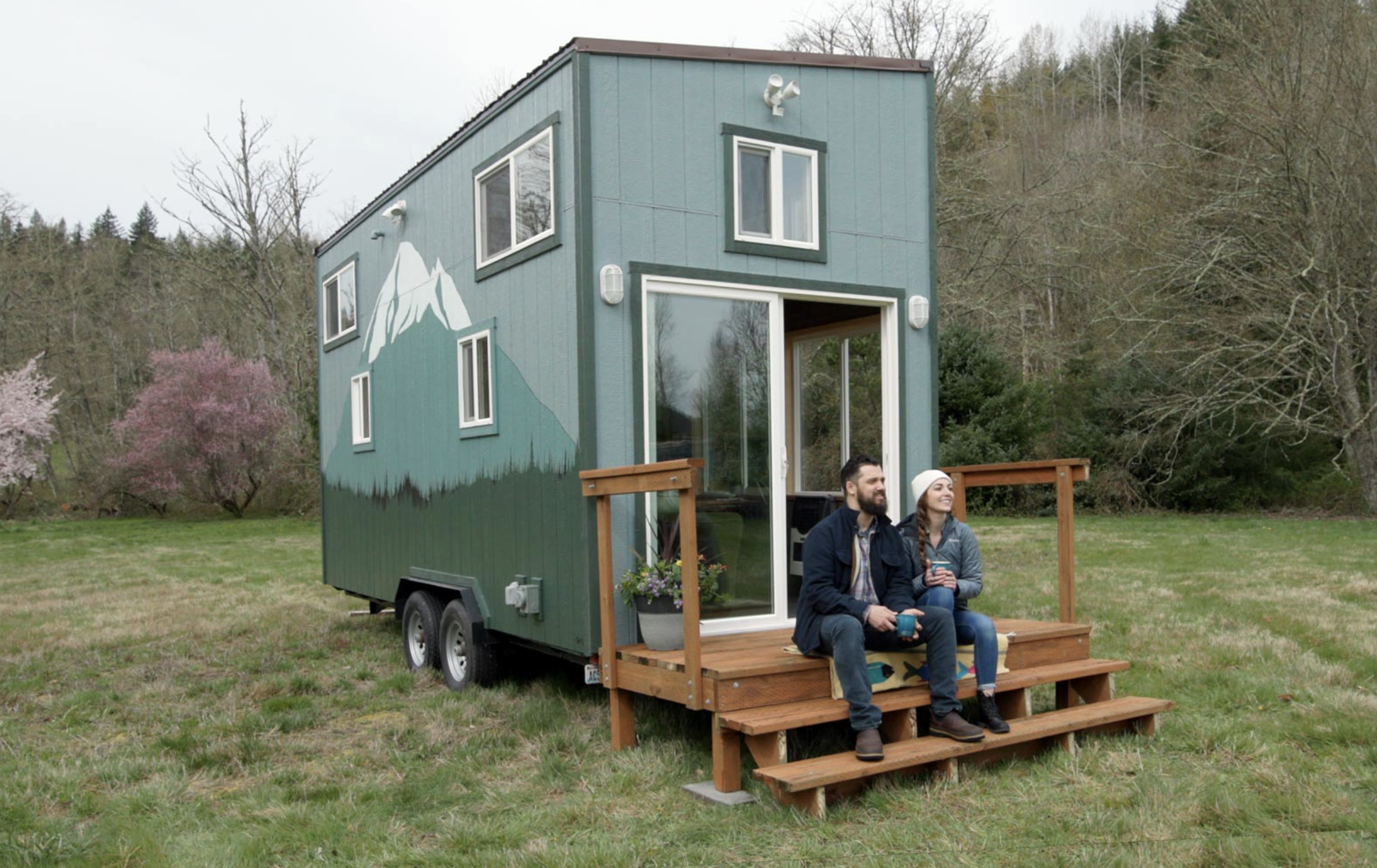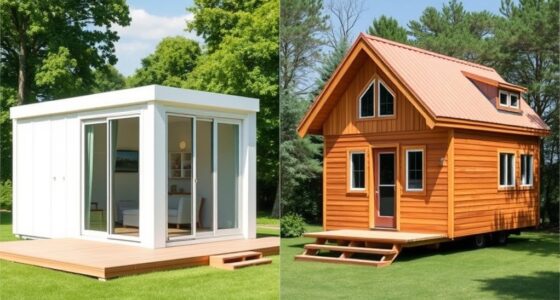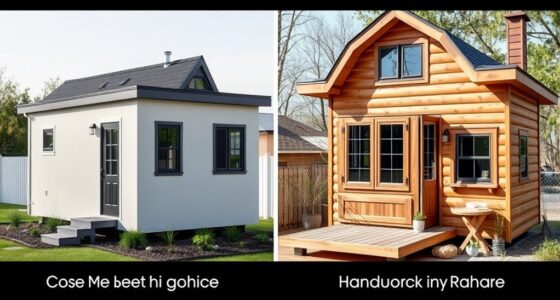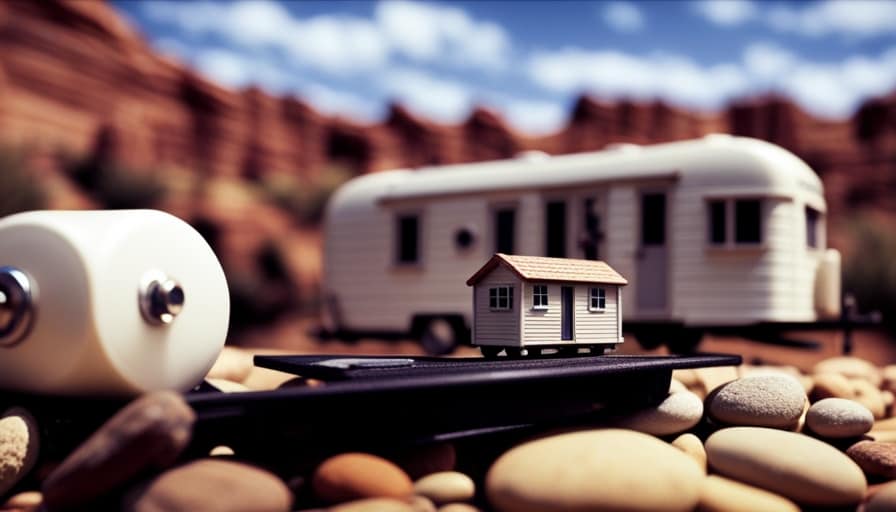As I explore the beginnings of the tiny house movement, a fascinating story emerges. It all started during the aftermath of the 2008 Financial Crisis, when a longing for simplicity and financial independence started to grow.
A group of brave souls embraced minimalism, downsizing their lives to the essentials. These innovators paved the way for a sustainable living movement, driven by environmental consciousness and off-grid solutions.
Through the power of social media, their message spread like wildfire, inspiring countless others worldwide.
Key Takeaways
- The Tiny House Movement originated in the aftermath of the 2008 Financial Crisis and was driven by the unstable housing market and the desire for sustainable and affordable housing options.
- Embracing minimalism and downsizing are core principles of the movement, with individuals prioritizing experiences and relationships over material possessions.
- Pioneers and innovators like Jay Shafer challenged traditional norms of home construction by designing unconventional and innovative tiny houses with creative storage solutions and multi-functional furniture.
- The movement promotes sustainable living and off-grid solutions, including utilizing renewable energy sources, rainwater harvesting, and emphasizing a simpler, more sustainable lifestyle.
The Financial Crisis of 2008: A Catalyst for Change
During the financial crisis of 2008, I realized that I needed to make some major changes in my life. The financial implications of the crisis were widespread, affecting not only the economy but also individuals like me.

One of the areas hit hardest was the housing market, which experienced significant fluctuations. Many people lost their homes or faced foreclosure due to the unstable market conditions. Witnessing the devastating impact of the crisis on families and communities made me reflect on my own financial situation.
I realized that I needed to find a more sustainable and affordable housing option. This realization was the catalyst for my interest in the tiny house movement, as I saw it as a way to downsize, reduce my expenses, and regain control of my financial future.
The Simplicity Movement: Embracing Minimalism and Downsizing
I embraced the simplicity movement and downsized my possessions, realizing that I didn’t need as much stuff as I thought. This led me to adopt a minimalist lifestyle and embrace the concept of small space living.
The simplicity movement is all about stripping away unnecessary clutter and focusing on what truly brings joy and meaning to our lives. It encourages us to let go of material possessions that no longer serve a purpose and instead prioritize experiences and relationships.
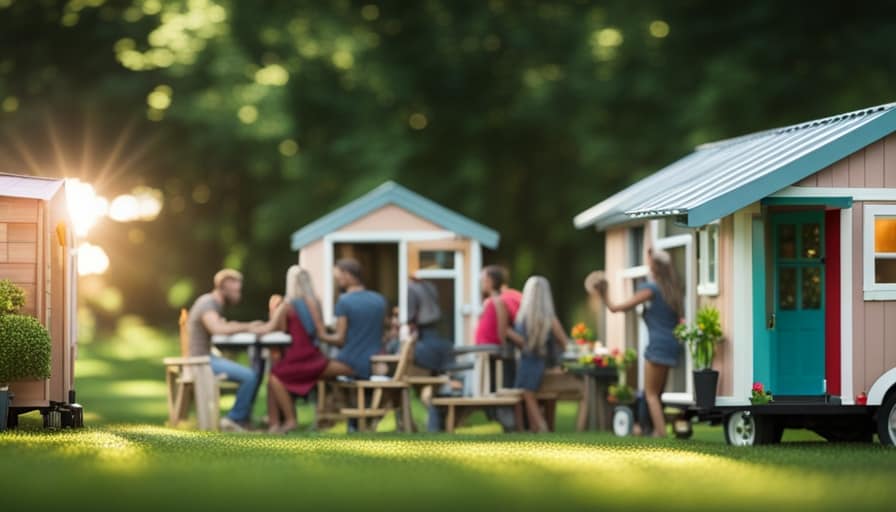
Living in a small space has its challenges, but it also offers numerous benefits. It forces us to be intentional with our belongings and teaches us to appreciate the little things. It also promotes sustainability and reduces our environmental impact.
Innovators and Trailblazers: Pioneers of the Tiny House Movement
While many individuals contributed to the growth of the tiny house movement, one of the key figures was Jay Shafer, who’s often credited as the pioneer of the modern tiny house movement. Shafer, along with other pioneering architects, brought a fresh perspective to the world of housing design by creating unconventional and innovative tiny house designs.
These architects challenged the traditional norms of home construction, focusing on minimalism, sustainability, and efficiency. Through their work, they showed that it was possible to live comfortably in a small space without sacrificing quality of life. Their designs often incorporated creative storage solutions, multi-functional furniture, and clever use of natural light to maximize the limited space available.
These pioneers paved the way for the tiny house movement, inspiring others to embrace simplicity and downsizing as a means of achieving a more sustainable and fulfilling lifestyle.
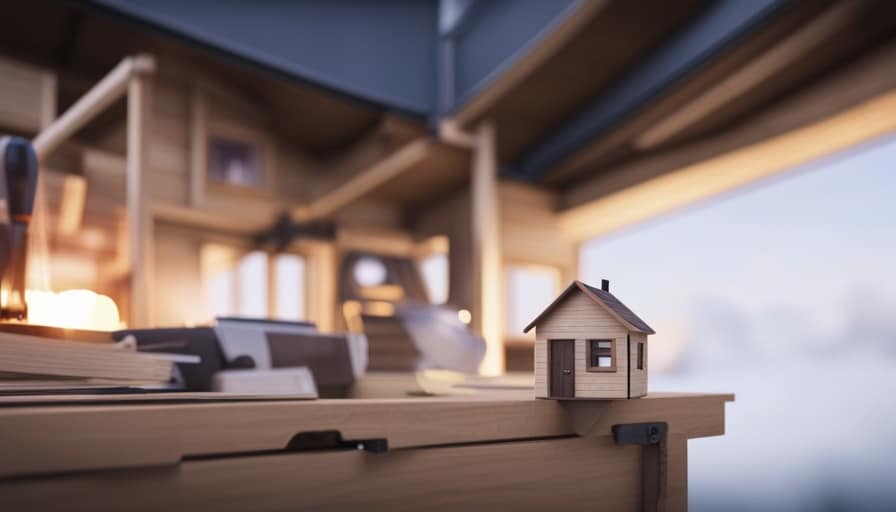
Sustainable Living: Environmental Consciousness and Off-Grid Solutions
As I delved deeper into the world of tiny houses, I discovered that sustainable living and off-grid solutions have played a significant role in shaping the movement.
Tiny houses are known for their minimal environmental impact and focus on self-sufficiency. By utilizing renewable energy sources such as solar power and rainwater harvesting, tiny homeowners are able to reduce their reliance on traditional utilities. This not only minimizes their carbon footprint but also allows them to live off-grid, meaning they’re completely self-sufficient and don’t rely on public utilities.
Additionally, the smaller size of tiny houses encourages a simpler, more sustainable lifestyle, with less consumption and waste. The emphasis on sustainable living and off-grid solutions is one of the core principles of the tiny house movement, appealing to those who desire to live in harmony with the environment while serving others.
The Impact of Social Media: Spreading the Tiny House Movement Worldwide
With social media platforms like Instagram and Facebook, the tiny house movement has been able to spread worldwide, inspiring people from all walks of life to embrace a simpler and more sustainable way of living. The impact of social media on the tiny house movement can’t be understated. Here are some key points to consider:
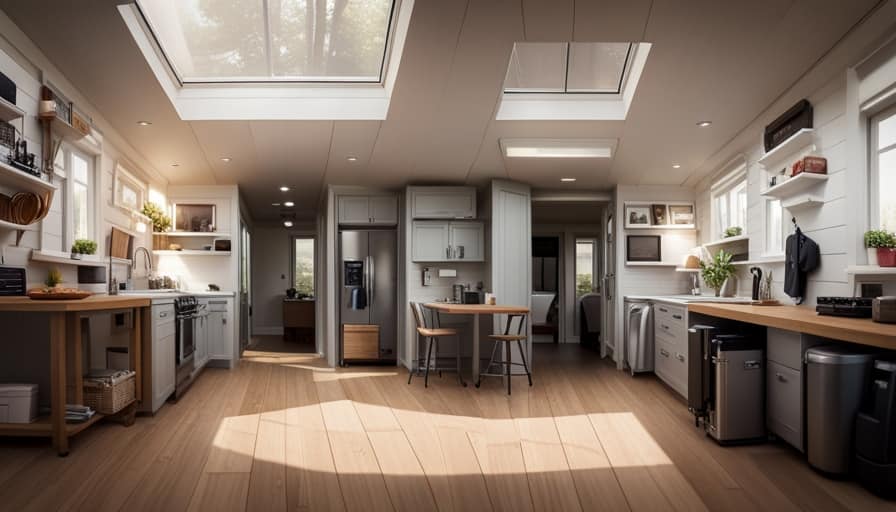
-
Social media influencers: Influencers play a significant role in promoting the tiny house lifestyle. Their posts and stories showcasing their own tiny homes and experiences inspire and educate a wide audience.
-
Online communities: Online platforms dedicated to the tiny house movement provide a space for enthusiasts to connect, share ideas, and support one another. These communities foster a sense of belonging and empower individuals to pursue their tiny house dreams.
Through social media, the tiny house movement has gained momentum, reaching people worldwide and creating a global community of individuals passionate about sustainable living.
Frequently Asked Questions
What Are the Average Costs Associated With Building and Maintaining a Tiny House?
On average, the costs of building and maintaining a tiny house can vary depending on factors such as size, materials, and location. Financing options like loans or personal savings can help cover these expenses.
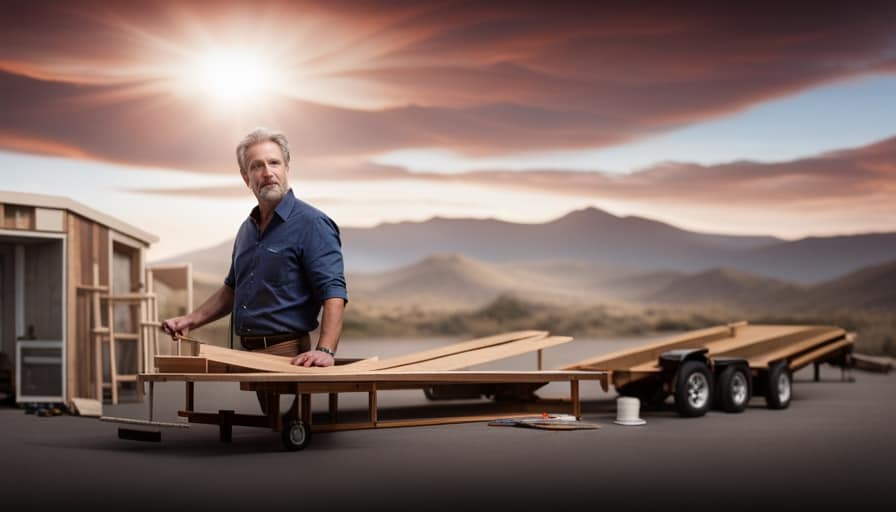
Are There Any Legal Restrictions or Regulations When It Comes to Living in a Tiny House?
When it comes to living in a tiny house, there can be legal implications and zoning regulations to consider. For example, some areas may have restrictions on where you can park or live in a tiny house.
How Do Tiny House Dwellers Handle Basic Utilities Such as Water, Electricity, and Sewage?
When it comes to off grid living in a tiny house, handling basic utilities can be a challenge. Tiny house dwellers often rely on alternative methods such as rainwater collection, solar power, and composting toilets for sustainable living.
What Are the Challenges and Benefits of Living in a Tiny House With a Family or a Pet?
Living in a tiny house with a family or pet has its challenges, like limited space and privacy. However, the benefits of a minimalistic lifestyle, such as lower expenses and a closer bond with loved ones, make it worthwhile.
Are There Any Specific Design Considerations or Techniques That Are Commonly Used in Tiny House Construction to Maximize Space?
To maximize space in tiny house construction, innovative storage solutions and multi-functional furniture are commonly used. It’s like fitting a puzzle together, finding clever ways to store belongings and make every inch count.

Conclusion
In conclusion, the tiny house movement has evolved from a response to the financial crisis of 2008 into a global phenomenon.
Through the simplicity movement, innovators and trailblazers have embraced minimalism and downsizing, while also prioritizing sustainable living and environmental consciousness.
Social media has played a crucial role in spreading awareness and connecting like-minded individuals worldwide.
The tiny house movement is a testament to our ability to adapt, simplify, and prioritize our values in the face of adversity.
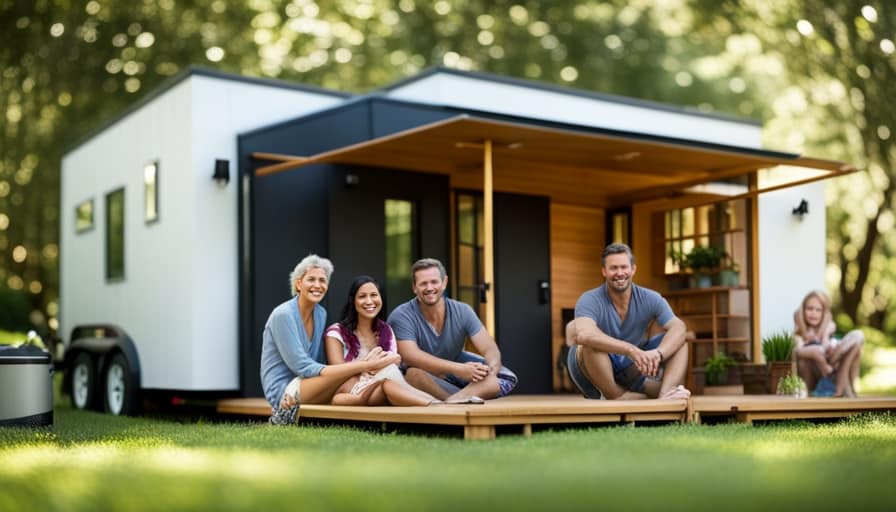
I’m Theodore, and I love tiny houses. In fact, I’m the author of Tiny House 43, a book about tiny houses that are also tree houses. I think they’re magical places where imaginations can run wild and adventures are just waiting to happen.
While tree houses are often associated with childhood, they can be the perfect adult retreat. They offer a cozy space to relax and unwind, surrounded by nature. And since they’re typically built on stilts or raised platforms, they offer stunning views that traditional homes simply can’t match.
If you’re looking for a unique and romantic getaway, a tree house tiny house might just be the perfect option.

